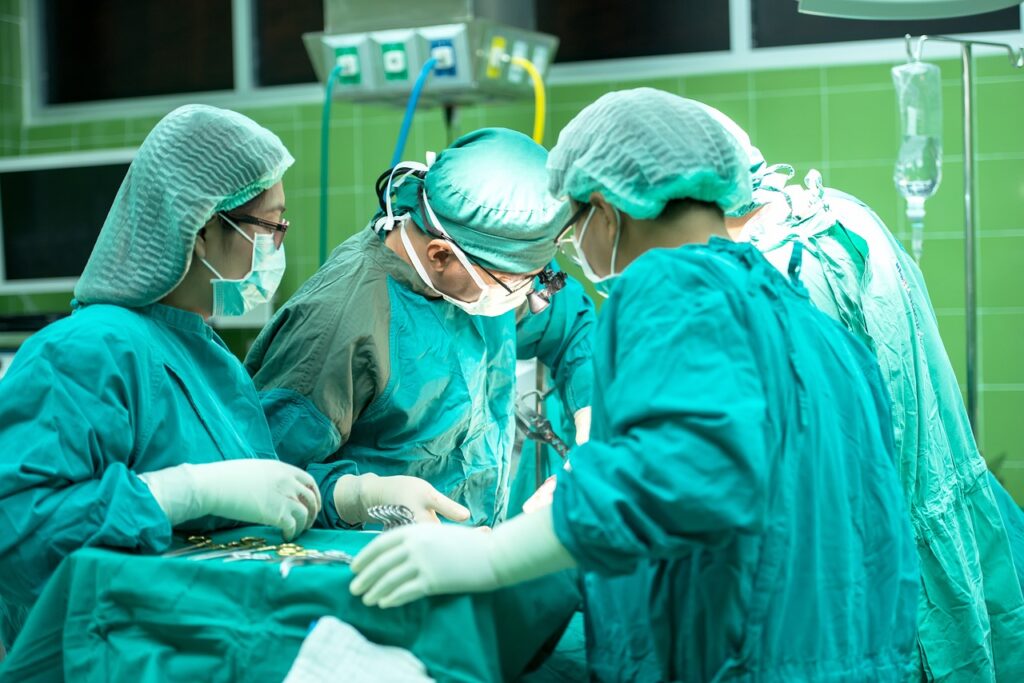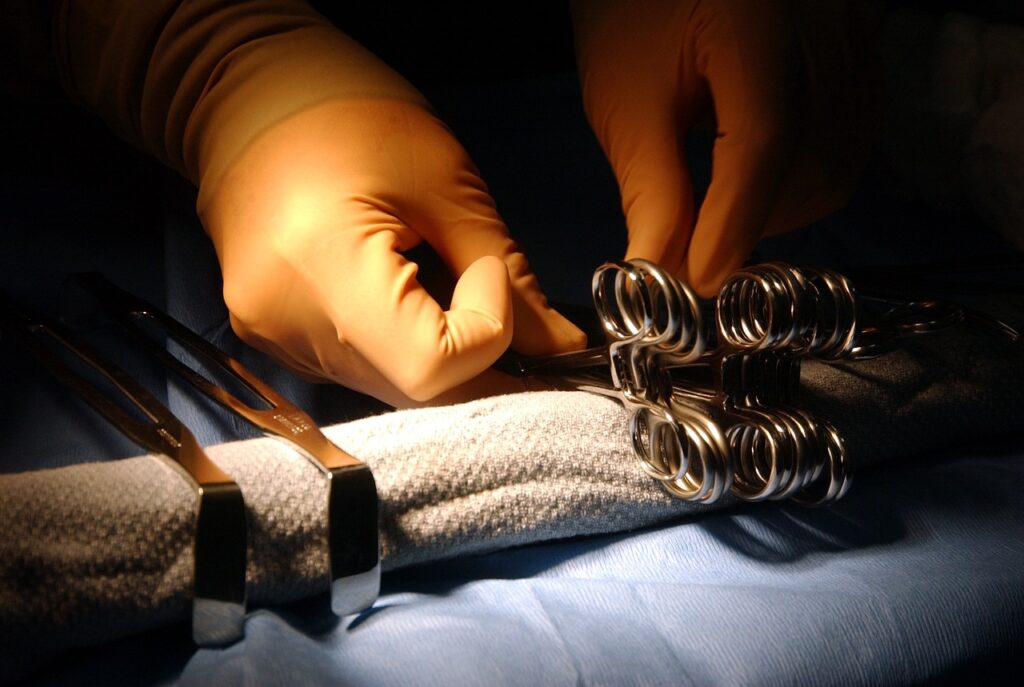Open heart surgery is a life-saving procedure that brings hope and new beginnings to countless individuals. However, the road to recovery is paved with essential precautions and care strategies, particularly concerning sternal precautions. This post is tailored for cardiac patients and occupational therapists, providing a comprehensive guide on navigating the delicate period after open heart surgery. It will cover everything from the importance of sternal precautions to practical tips for everyday activities.
Understanding Open Heart Surgery

Open heart surgery is a major medical procedure aimed at repairing heart damage. It often involves procedures such as coronary artery bypass grafting (CABG), which improves blood flow to the heart. It’s a path filled with promise but also necessitates rigorous care during recovery. Understanding the basics of this surgery is crucial for both patients and therapists, setting a strong foundation for effective post-operative care.
The heart, a complex muscle, requires careful handling during surgery. Surgeons must gain access to it by opening the sternum, hence the name “open heart surgery.” This process stresses the importance of adhering to specific post-operative guidelines known as cardiac precautions. These precautions are instrumental in ensuring the sternum heals properly while minimizing complications.
For occupational therapists, understanding the intricacies of open heart surgery enables them to offer better support to their patients. It allows them to tailor rehabilitation programs that respect the body’s healing process. By integrating knowledge of surgical procedures with therapeutic care, therapists can significantly contribute to a patient’s recovery.
The Role of Occupational Therapy in Cardiac Recovery
Occupational therapy plays a pivotal role in cardiac recovery, providing patients with tools and techniques to regain independence. It focuses on helping individuals perform daily activities safely and efficiently, especially after undergoing major surgeries like CABG. By addressing both physical and emotional challenges, occupational therapy enhances the overall quality of life for cardiac patients.
Therapists work closely with patients to design personalized rehabilitation plans. These plans include exercises and strategies that respect sternal precautions, ensuring the healing process is not compromised. By focusing on holistic care, occupational therapy empowers patients to regain confidence in their abilities while promoting a smooth recovery.
The collaboration between healthcare providers and occupational therapists is crucial in cardiac recovery. By sharing insights and strategies, they create a supportive environment that encourages healing and progress. Occupational therapy becomes an invaluable ally for cardiac patients, guiding them through the complexities of recovery with expertise and compassion.
What Are Sternal Precautions?
Sternal precautions are guidelines designed to protect the sternum after open heart surgery. These precautions are vital in ensuring proper healing and minimizing the risk of complications. They involve specific restrictions on movements and activities that could strain the chest area, providing a crucial framework for safe recovery.
The primary goal of sternal precautions is to avoid excessive stress on the sternum. This includes limiting activities such as lifting heavy objects, pushing or pulling with the arms, and certain movements that could disrupt healing. Adhering to these precautions is essential for preventing complications and promoting a successful recovery.
For both cardiac patients and therapists, understanding sternal precautions is key to effective post-operative care. By incorporating these guidelines into daily routines and rehabilitation programs, they can create a safe and supportive environment for healing. Sternal precautions become a foundation for successful recovery, ensuring the path to wellness is smooth and secure.
Why Sternal Precautions Matter
Sternal precautions are not just guidelines; they are essential safeguards for cardiac patients. Following these precautions is crucial for avoiding complications and ensuring the sternum heals correctly. It’s a vital aspect of the recovery process that deserves attention and adherence to promote overall well-being.
Neglecting sternal precautions can lead to serious complications, such as sternal instability or even infection. These risks highlight the importance of strict adherence to precautionary measures, emphasizing the need for education and awareness among both patients and therapists. It’s a shared responsibility that requires commitment and vigilance.
For occupational therapists, reinforcing the importance of sternal precautions is a significant part of their role. By educating patients and caregivers about these guidelines, they empower individuals to take charge of their recovery. Sternal precautions become a central focus in rehabilitation programs, guiding patients towards a healthy and successful recovery.
Implementing Sternal Precautions After CABG

After undergoing CABG, implementing sternal precautions becomes a critical part of the recovery process. These precautions are designed to protect the sternum and ensure it heals properly, minimizing the risk of complications. Following these guidelines is essential for promoting a smooth and successful recovery.
Patients are advised to avoid heavy lifting and activities that strain the chest area. This includes carrying heavy objects, pushing or pulling with the arms, and certain exercises that could disrupt healing. By adhering to these precautions, patients can protect their sternum and promote a healthy recovery.
Occupational therapists play a key role in guiding patients through the implementation of sternal precautions. They provide education and support, helping patients integrate these guidelines into their daily routines. By reinforcing the importance of sternal precautions, therapists empower patients to take an active role in their recovery, ensuring a safe and effective healing process.
Tips for Daily Activities While Observing Sternal Precautions
Navigating daily activities while observing sternal precautions can be challenging for cardiac patients. However, with the right strategies and support, it’s possible to maintain independence and safely perform everyday tasks. Occupational therapists offer valuable tips and guidance to help patients manage their routines effectively.
One effective strategy is to use assistive equipment, such as reachers, to minimize strain on the chest. Patients are encouraged to sit down while dressing and to avoid reaching overhead, which can put stress on the sternum. By incorporating these techniques, patients can maintain independence while prioritizing their safety.
Occupational therapists also emphasize the importance of pacing and planning activities. By breaking tasks into smaller steps and allowing for frequent rest breaks, patients can conserve energy and avoid overexertion. These strategies promote a balanced approach to daily activities, enabling patients to maintain their routines without compromising their recovery.
Important Strategies for Safe Bathing and Dressing
- Shower Chair or Tub Transfer Bench:
Consider obtaining a shower chair or tub transfer bench. This allows patients to conserve energy while performing daily activities like bathing.
- Infection Prevention:
To avoid infection, use a separate washcloth for each incision. This practice helps to ensure that infections do not occur.
- Placement of Self-Care Items:
Arrange self-care items to conserve energy and maintain sternal precautions. Ensure that bathroom items are within reach rather than being placed overhead.
- Toilet Height Adjustment:
If using a low toilet at home, a 3-in-1 commode can be placed over it to increase its height. This allows patients to stand up safely without using their arms, reducing the risk of breaking sternal precautions.
- Ventilation During Showering:
Leave the bathroom door slightly open during recovery to allow steam to escape. This can help patients breathe easier during daily activities.
- Sitting Down for Dressing:
Sit down while dressing and retrieve clothing ahead of time. This approach makes dressing easier and reduces the physical demand of the activity.
The Importance of Gradual Progression in Physical Activity
It is likely that the individual will have some pain post-surgery which may cause the individual to be more sedentary. Gradual progression in physical activity is essential for cardiac patients observing sternal precautions. Engaging in exercises that respect the body’s healing process promotes cardiovascular health and enhances overall recovery. Occupational therapists guide patients through this gradual progression, ensuring their safety and well-being.
Starting with gentle exercises, such as walking or active range of movement of the arms, helps build endurance without putting stress on the sternum. Patients are encouraged to listen to their bodies and gradually increase their activity levels as they feel comfortable. By following a structured approach, patients can safely enhance their physical fitness while adhering to sternal precautions.
Occupational therapists play a key role in designing personalized exercise programs that consider individual needs and abilities. By tailoring activities to each patient’s unique circumstances, they promote a safe and effective recovery process. Gradual progression in physical activity becomes a vital component of the rehabilitation program, supporting long-term health and wellness.
Addressing Emotional Challenges During Recovery
The recovery process after open heart surgery can present emotional challenges for cardiac patients. Feelings of anxiety, stress, and uncertainty are common, impacting overall well-being and quality of life. Occupational therapists address these emotional challenges by providing support and resources to promote mental and emotional health.
Therapists encourage patients to express their feelings and concerns, creating a safe and supportive environment for open communication. By acknowledging and validating these emotions, therapists help patients process their experiences and develop coping strategies. Addressing emotional challenges becomes a crucial aspect of the rehabilitation program, promoting holistic recovery.
Incorporating relaxation techniques, such as breathing exercises or meditation, can also be beneficial for managing stress and anxiety. Occupational therapists guide patients in exploring these techniques, equipping them with tools to enhance their emotional well-being.
Allowing the individual to return to as many normal activities as possible pre-surgery is of the utmost importance. Through the occupational therapist developing an occupational profile, an occupational therapist will be able to determine and design a specific treatment plan tailored to the interests of the individual, thereby helping the individual increase their quality of life and potentially heal faster.
For example, an individual may be an avid piano player. By adapting the activity to assure the activity is within the sternal precautions and within the activity tolerance of the individual, the individual may be able to return to that activity more quickly or maybe just listening to music may help the patient to recover better. Perhaps the individual loves to garden. Adapting the activity to tabletop gardening may be something that can be incorporated in the plan of care. The goal would be to slowly increase the activity to the point where the individual would be completely independent in gardening. By addressing emotional challenges, therapists promote a balanced and comprehensive approach to recovery.
The Role of Family and Caregivers in Supporting Recovery
Family members and caregivers play a vital role in supporting cardiac patients during their recovery. Their involvement and understanding of sternal precautions and care strategies contribute significantly to the healing process. Occupational therapists work closely with family members and caregivers to provide education and guidance, empowering them to offer effective support.
Caregivers are encouraged to participate in rehabilitation sessions and learn about sternal precautions and other care guidelines. By understanding the recovery process, they can provide valuable assistance and encouragement to the patient. The collaboration between therapists, caregivers, and patients creates a supportive network that fosters healing and progress.
In addition to physical support, caregivers offer emotional encouragement and companionship during recovery. Their presence and involvement contribute to a positive and nurturing environment, promoting overall well-being. Occupational therapists emphasize the importance of caregiver support, recognizing its impact on the recovery process.
Monitoring Progress and Adjusting Care Plans

Monitoring progress and adjusting care plans is a dynamic process that is essential for successful recovery. Regular assessments and evaluations help identify areas of improvement and address potential challenges. Occupational therapists play a key role in monitoring progress and adapting care plans to meet the evolving needs of cardiac patients.
Through ongoing communication and collaboration with patients, therapists assess their progress and make necessary adjustments to rehabilitation programs. These adjustments may involve modifying exercises, introducing new strategies, or addressing specific concerns that arise during recovery. By tailoring care plans to individual needs, therapists promote effective and personalized support.
Monitoring progress involves evaluating patient adherence to sternal precautions and care guidelines. By providing feedback and reinforcement, therapists help patients stay on track and motivated in their recovery journey. This dynamic approach ensures that care plans remain relevant and effective, supporting long-term health and well-being.
Resources for Further Support and Education
For cardiac patients and therapists seeking further support and education, a wealth of resources is available to enhance understanding and promote recovery. These resources offer valuable insights, guidance, and tools to support both patients and healthcare professionals in their journey.
Occupational therapy associations and organizations also offer valuable resources and support networks. They provide opportunities for professional development, continuing education, and peer collaboration. By engaging with these resources, therapists can stay informed about best practices and advancements in cardiac care, enhancing their ability to support patients effectively.
A Path to Healing and Wellness
In conclusion, open heart surgery and the subsequent recovery process require careful attention to sternal precautions and care strategies. For cardiac patients and occupational therapists, understanding these guidelines is essential for promoting a safe and successful recovery. By adhering to sternal precautions, incorporating gradual physical activity, addressing emotional challenges, and leveraging caregiver support, patients can enhance their well-being and quality of life.
Occupational therapists play a vital role in guiding patients through this recovery process, offering expertise, support, and personalized care plans. By collaborating with patients and caregivers, therapists create a holistic approach that addresses both physical and emotional aspects of recovery.
By prioritizing education, monitoring progress, and leveraging available resources, therapists empower patients to take an active role in their recovery. Together, they create a path to healing and wellness, ensuring a brighter and healthier future for cardiac patients. With the support of occupational therapists, patients can overcome challenges and thrive in their recovery journey.
The information provided on this website is for general informational purposes only. It is not intended as, nor should it be considered, professional or medical advice. Always consult a professional regarding your specific medical issue.
Frequently Asked Questions
What are sternal precautions, and why are they important?
Sternal precautions are guidelines designed to protect the sternum and promote safe healing following open heart surgery. They limit certain activities, such as raising arms above shoulder level, pushing, pulling and lifting heavy objects, to prevent strain on the chest and reduce the risk of complications during recovery.
How can I manage pain and discomfort after surgery?
Post-surgical pain management may involve prescribed medications, ice applications, and relaxation techniques. Communicating openly with your healthcare team about your pain levels can help them adjust your treatment plan to ensure your comfort during recovery.
When can I resume physical activity following my surgery?
It’s crucial to follow the guidance of your healthcare provider regarding physical activity. Generally, light activities may be encouraged within a few weeks, but more strenuous exercises should be gradually introduced based on your progress and safety guidelines established by your physician and occupational therapist.
What resources are available for education on cardiac care?
Numerous online platforms, educational websites, and occupational therapy organizations offer resources on cardiac recovery, sternal precautions, and post-operative care. These materials can enhance your understanding of the recovery process and equip you with practical strategies for managing your health.
Recently Featured OT Insider Posts
Spinal Precautions: Essential Guidelines for Occupational Therapy
Transforming Lives with the PEO Model in Occupational Therapy
Understanding WFL (Within Functional Limits) in Occupational Therapy
Flowing Through the KAWA Model in Occupational Therapy
Boosting Patient Autonomy with the Modified Barthel Index
Mastering the Stand Pivot Transfer (SPT) in Occupational Therapy
Step Up in Occupational Therapy with Ankle-Foot Orthoses (AFOs)
